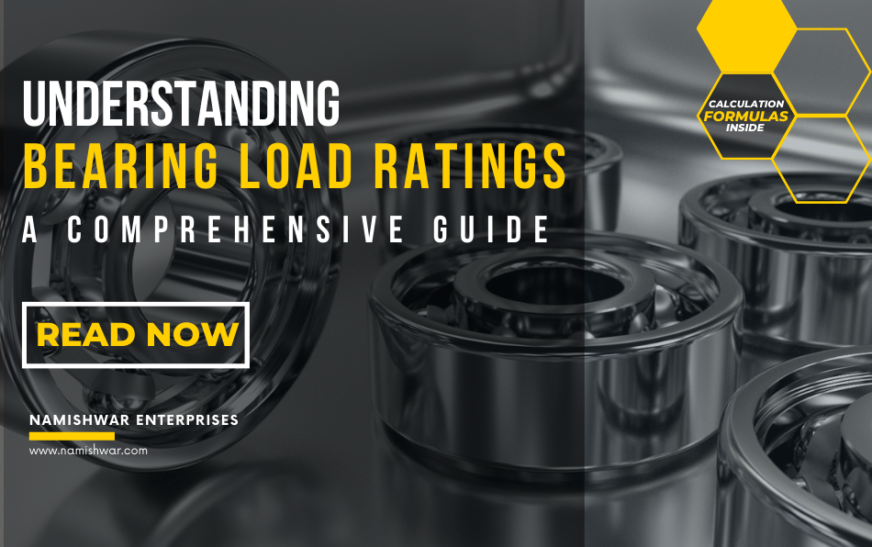Bearings are essential components in machinery, enabling smooth rotational or linear movement while minimizing friction and wear. Understanding bearing load ratings is crucial to ensure optimal performance and longevity of bearings. This comprehensive guide delves into the key aspects of bearing load ratings, including definitions, types, calculations, and their significance in various applications.
What are Bearing Load Ratings?
Bearing load ratings are numerical values that indicate the maximum load a bearing can withstand under specific conditions. These ratings help select the appropriate bearing for different applications, ensuring reliability and efficiency.
Static Load Rating
The static load rating, often denoted as:

represents the maximum load a bearing can endure without permanent deformation while stationary. This rating is crucial for applications where bearings experience heavy loads without movement.
Dynamic Load Rating
The dynamic load rating, denoted as:

signifies the load a bearing can handle while in motion. It is the load at which the bearing can operate for one million revolutions without significant wear. This rating is essential for bearings in continuous operation.
Types of Bearing Load Ratings
Understanding the different load rating types helps select the right bearing for specific applications.
Radial Load Rating
Radial load ratings pertain to loads perpendicular to the bearing’s axis. These ratings are critical for applications involving high radial forces, such as electric motors and conveyor belts.
Axial (Thrust) Load Rating
Axial load ratings refer to loads parallel to the bearing’s axis. These ratings are vital for applications with significant thrust forces, such as screw conveyors and vertical shafts.
Combined Load Rating
Combined load ratings consider both radial and axial loads. These ratings are essential for applications where bearings experience a combination of forces, such as in gearboxes and automotive transmissions.
Calculating Bearing Load Ratings
Accurate bearing load rating calculation ensures the right bearing selection for specific applications. The following formulas are commonly used:
Static Load Rating Calculation

Dynamic Load Rating Calculation

Significance of Bearing Load Ratings
Bearing load ratings are crucial in various applications, impacting performance, reliability, and lifespan.
Ensuring Optimal Performance
Selecting bearings with appropriate load ratings ensures optimal performance, reducing downtime and maintenance costs. Bearings that can handle the expected loads operate smoothly and efficiently.
Enhancing Reliability and Safety
Proper load rating selection enhances the reliability and safety of machinery. Bearings operating within their load limits are less likely to fail, preventing accidents and costly repairs.
Extending Bearing Life
Using bearings with correct load ratings extends their lifespan. Bearings subjected to appropriate loads experience less wear and tear, reducing the frequency of replacements.
Application of Bearing Load Ratings in Different Industries
Bearing load ratings are vital across various industries, each with unique requirements.
Mining & Processing Industry
Mining machinery, including conveyors, presses, and CNC machines, relies on bearings with precise load ratings. Proper load rating selection ensures seamless operation and productivity.
Crane Manufacturing
Heavy machinery in the construction industry, such as excavators and cranes, requires bearings with robust load ratings. These bearings must endure significant radial and axial forces during operation.
Factors Influencing Bearing Load Ratings
Several factors influence bearing load ratings, affecting their performance and suitability for specific applications.
Material and Design
The material and design of bearings impact their load ratings. Bearings made from high-quality materials and with advanced design features can withstand higher loads.
Operating Conditions
Operating conditions, such as temperature, speed, and lubrication, affect bearing load ratings. Bearings in harsh environments require higher load ratings to maintain performance.
Installation and Maintenance
Proper installation and maintenance practices influence bearing load ratings. Incorrect installation or poor maintenance can reduce a bearing’s load capacity and lifespan.
Conclusion
Understanding bearing load ratings is essential for selecting the right bearings for various applications. By considering static, dynamic, radial, and axial load ratings, material, design, and operating conditions, you can ensure optimal performance, reliability, and longevity of bearings in any industry.










